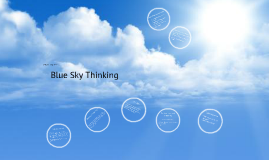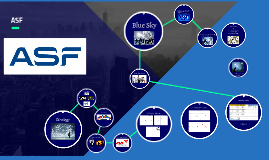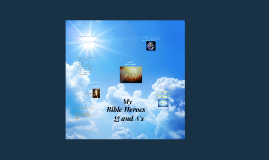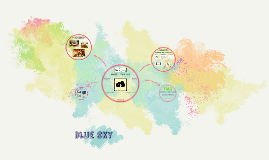Blue Sky
Transcript: "Blue Skies" INTRO Why this topic TODAY'S SCHEDULE Breakdown 1 Answer History Findings Resources 2 3 4 ABOUT How We View the Sky TEAM Rays of Color VALUES Answer Sunlight reaches Earth's atmosphere and is scattered in all directions by all the gases and particles in the air. Blue light is scattered more than the other colors because it travels as shorter, smaller waves. This is why we see a blue sky most of the time. Reasoning Reasons why the sky is blue PROGRAMS PROGRAM 1 Reason 1 Color of Light Visible light is the part of the electromagnetic spectrum that our eyes can see. Light from the sun or a light bulb may look white, but it is actually a combination of many colors. We can see the different colors of the spectrum by splitting the light with a prism. The spectrum is also visible when you see a rainbow in the sky. The colors blend continuously into one another. At one end of the spectrum are the reds and oranges. These gradually shade into yellow, green, blue, indigo and violet. The colors have different wavelengths, frequencies, and energies. Violet has the shortest wavelength in the visible spectrum. That means it has the highest frequency and energy. Red has the longest wavelength, and lowest frequency and energy. PROGRAM 2 Light in the Air Rayeligh Scattering Rayleigh scattering refers to the scattering of light off of the molecules of the air, and can be extended to scattering from particles up to about a tenth of the wavelength of the light. It is Rayleigh scattering off the molecules of the air which gives us the blue sky. Lord Rayleigh calculated the scattered intensity from dipole scatterers much smaller than the wavelength to be: Rayleigh scattering can be considered to be elastic scattering since the photon energies of the scattered photons is not changed. Scattering in which the scattered photons have either a higher or lower photon energy is called Raman scattering. Usually this kind of scattering involves exciting some vibrational mode of the molecules, giving a lower scattered photon energy, or scattering off an excited vibrational state of a molecule which adds its vibrational PROGRAM 3 Reason 3 Why we ultimately see the sky as "BLUE" The blue color of the sky is due to Rayleigh scattering. As light moves through the atmosphere, most of the longer wavelengths pass straight through. Little of the red, orange and yellow light is affected by the air. However, much of the shorter wavelength light is absorbed by the gas molecules. The absorbed blue light is then radiated in different directions. It gets scattered all around the sky. Whichever direction you look, some of this scattered blue light reaches you. Since you see the blue light from everywhere overhead, the sky looks blue. As you look closer to the horizon, the sky appears much paler in color. To reach you, the scattered blue light must pass through more air. Some of it gets scattered away again in other directions. Less blue light reaches your eyes. The color of the sky near the horizon appears paler or white. Resources Resources https://spaceplace.nasa.gov/blue-sky/en/ https://www.scientificamerican.com/article/why-is-the-sky-blue/ https://scijinks.gov/blue-sky/

















